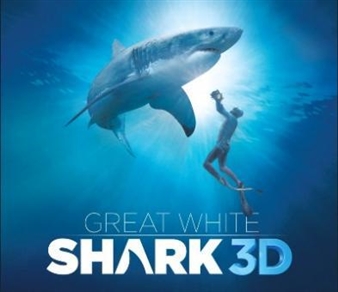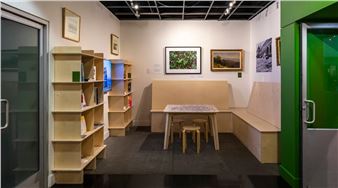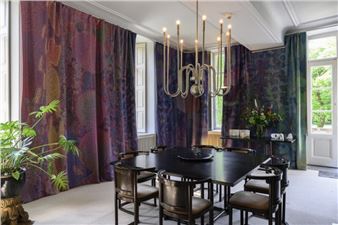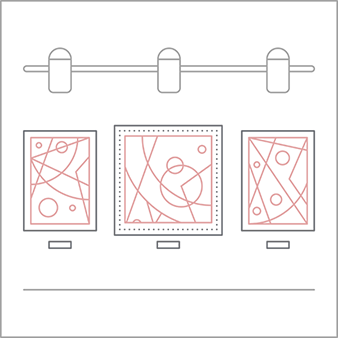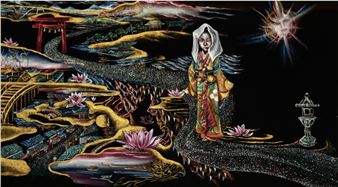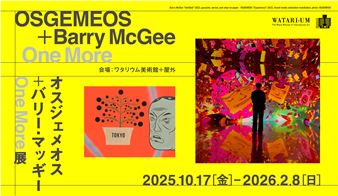Yasue Kodama: Between the Present and the AbsentEarly Paintings
Yasue Kodama was born in Kobe, Japan, in 1961 and graduated from the Department of Fine Arts at the Kyoto City University of Arts with a major in Oil Painting. She began to paint her series of still life paintings under the title natura morta (which translates to вҖҳstill lifeвҖҷ in Italian). The deeper she delved into the philosophy underpinning her artistic production, the more abstract her paintings became. Pictorial subjects positioned firmly on the table gradually lose their tangible material essence, resembling stains, and begin to float, drifting across the picture plane like shadows. In the 1990s, the scale of her works expanded: brightly colored brushstrokes of blue, yellow, and red run freely across huge canvases that envelop the viewer. Her artistic style drastically transforms from representational reproductions of real objects to completely abstract, almost calligraphic paintings. She pursues the inherent material essence hidden in the pictorial space, which appears unexpectedly in the empty space between the traces of her vigorous brush. The erasure of what was present emphasizes the pictorial existence. KodamaвҖҷs works reiterate the space between what is present and absent.
Over the next decade, Kodama continues to develop her abstract pictorial language, but after a certain point, she suddenly reverts to the representational and begins to reincorporate objects in her natural surroundings, such as flowers, trees, and goldfish, into her paintings, probing deeper into her pictorial philosophy. In 2009, she began a series of works titled Deep Rhyme, in which вҖңthe shadows and depths disclosed by an unknowable presence are abstracted into painting.вҖқ
Viewed in this light, KodamaвҖҷs paintings periodically move back and forth between the representational and the abstract, but her philosophy and implementation behind this process are far more complex. Her early artistic style of realistically capturing the minute details of her subjects and reproducing them enabled her to explore the meaning of presence in painting, the relationship between herself and the pictorial subject, the emptiness and depth of the space between, the incorporation of a chance element in relation to time, among others. While refining her painting techniques to delve into these considerations, she has continued her endeavor to overcome the prevailing language of modernist painting critically, exploring the world that can only be expressed through her paintings. KodamaвҖҷs early works from the 1980s and 1990s represent her first decisive plunge. This two-part exhibition, Between the Present and the Absent, will examine the traces of her exploration.
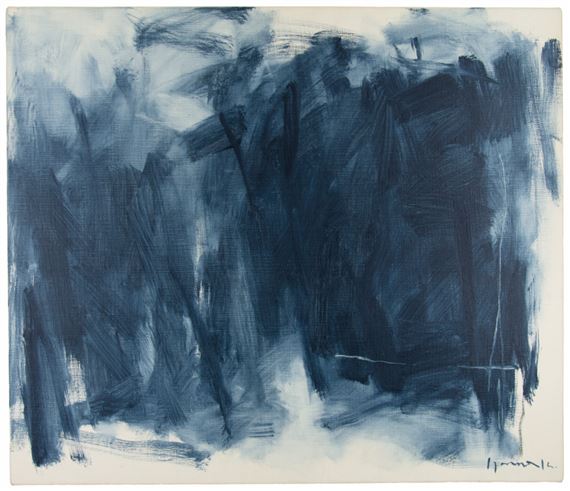
Recommended for you
Yasue Kodama was born in Kobe, Japan, in 1961 and graduated from the Department of Fine Arts at the Kyoto City University of Arts with a major in Oil Painting. She began to paint her series of still life paintings under the title natura morta (which translates to вҖҳstill lifeвҖҷ in Italian). The deeper she delved into the philosophy underpinning her artistic production, the more abstract her paintings became. Pictorial subjects positioned firmly on the table gradually lose their tangible material essence, resembling stains, and begin to float, drifting across the picture plane like shadows. In the 1990s, the scale of her works expanded: brightly colored brushstrokes of blue, yellow, and red run freely across huge canvases that envelop the viewer. Her artistic style drastically transforms from representational reproductions of real objects to completely abstract, almost calligraphic paintings. She pursues the inherent material essence hidden in the pictorial space, which appears unexpectedly in the empty space between the traces of her vigorous brush. The erasure of what was present emphasizes the pictorial existence. KodamaвҖҷs works reiterate the space between what is present and absent.
Over the next decade, Kodama continues to develop her abstract pictorial language, but after a certain point, she suddenly reverts to the representational and begins to reincorporate objects in her natural surroundings, such as flowers, trees, and goldfish, into her paintings, probing deeper into her pictorial philosophy. In 2009, she began a series of works titled Deep Rhyme, in which вҖңthe shadows and depths disclosed by an unknowable presence are abstracted into painting.вҖқ
Viewed in this light, KodamaвҖҷs paintings periodically move back and forth between the representational and the abstract, but her philosophy and implementation behind this process are far more complex. Her early artistic style of realistically capturing the minute details of her subjects and reproducing them enabled her to explore the meaning of presence in painting, the relationship between herself and the pictorial subject, the emptiness and depth of the space between, the incorporation of a chance element in relation to time, among others. While refining her painting techniques to delve into these considerations, she has continued her endeavor to overcome the prevailing language of modernist painting critically, exploring the world that can only be expressed through her paintings. KodamaвҖҷs early works from the 1980s and 1990s represent her first decisive plunge. This two-part exhibition, Between the Present and the Absent, will examine the traces of her exploration.

 ARTISTS
ARTISTS









